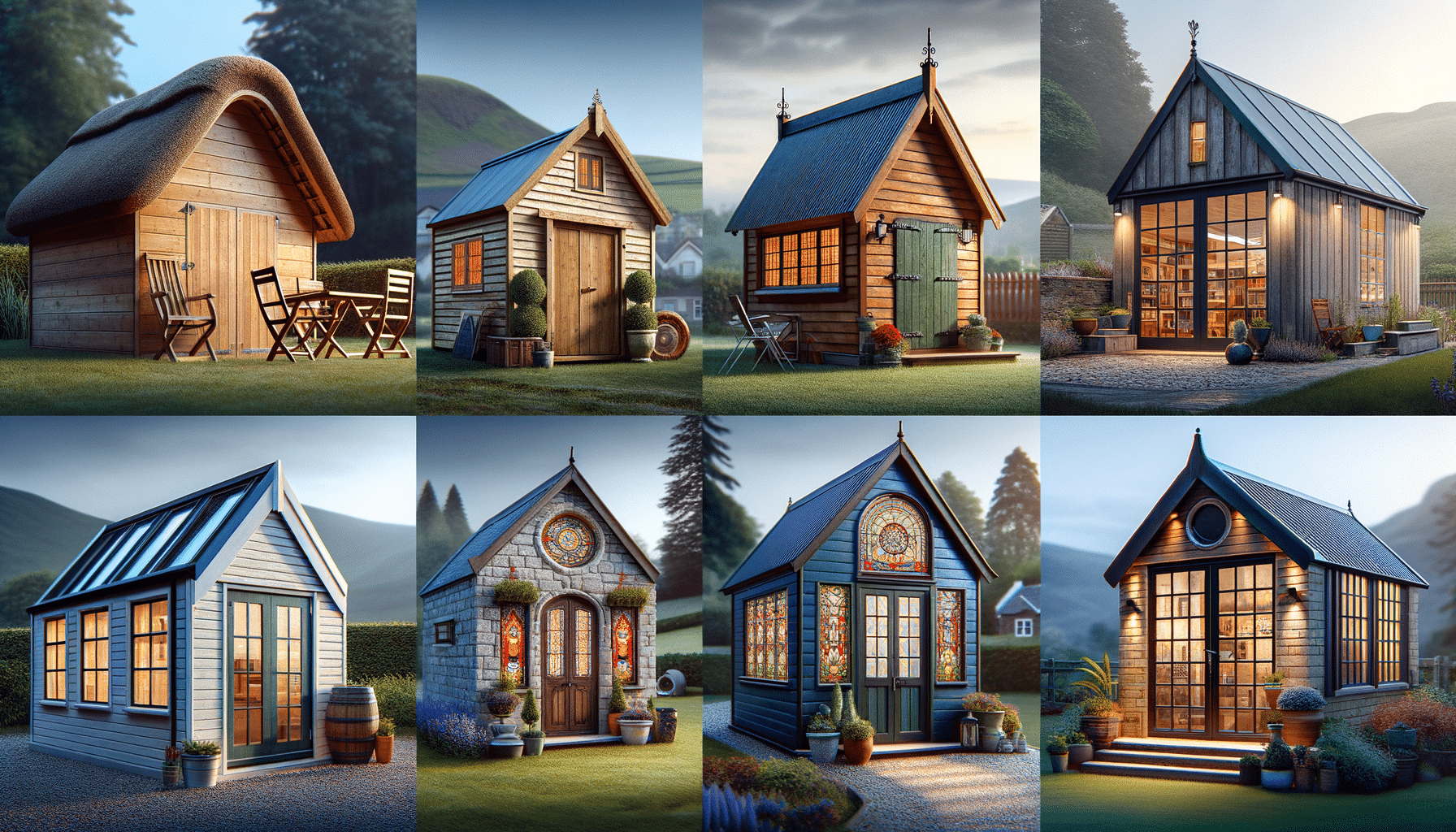Exploring the World of Sheds: Functionality, Styles, and More
Sheds serve as versatile structures, offering storage solutions and enhancing outdoor spaces.

The Multifaceted Role of Sheds
Sheds have long been a staple in gardens and backyards, serving a multitude of purposes beyond mere storage. Traditionally, sheds provide a space to store gardening tools, equipment, and other outdoor essentials. However, their utility has expanded significantly over the years. Today, sheds can function as workshops, hobby rooms, home offices, or even cozy retreats. This versatility makes them an invaluable addition to any property, offering a dedicated space that can be tailored to meet specific needs.
One of the key benefits of sheds is their ability to declutter homes by providing additional storage space. This can free up valuable indoor areas, making homes more organized and spacious. Furthermore, sheds can be customized with shelving, hooks, and other organizational tools to maximize their storage potential.
In addition to storage, sheds can enhance the aesthetic appeal of outdoor spaces. With a variety of styles and materials available, sheds can complement the architectural design of a home, adding charm and character to a garden or backyard. Whether opting for a rustic wooden shed or a sleek, modern design, the right choice can transform an outdoor area into a visually appealing and functional space.
Materials and Construction: Choosing the Right Shed
When considering a shed, the choice of materials is pivotal in determining its durability, maintenance needs, and overall appearance. Common materials include wood, metal, and plastic, each offering distinct advantages.
Wooden sheds are renowned for their aesthetic appeal and natural integration into garden settings. They can be painted or stained to match personal preferences and are often considered the most visually pleasing option. However, wooden sheds require regular maintenance to protect against weather damage, such as rot and insect infestation.
Metal sheds, typically made from steel or aluminum, offer exceptional durability and security. They are resistant to fire, pests, and rot, making them a low-maintenance option. However, they may not blend as seamlessly into natural surroundings as wooden sheds do.
Plastic sheds, often constructed from high-density polyethylene or resin, are lightweight, durable, and resistant to rot and decay. They require minimal maintenance and are easy to assemble, making them a popular choice for those seeking convenience. However, they may lack the traditional charm of wooden sheds.
Ultimately, the choice of material should align with the intended use of the shed, climate conditions, and personal aesthetic preferences.
Design and Style: Finding the Perfect Fit
The design and style of a shed can significantly impact its functionality and how it complements the surrounding environment. Sheds come in a variety of styles, from traditional gable roofs to contemporary flat roofs, each offering unique benefits.
Gable roofs are a classic choice, providing ample headroom and effective water runoff. This style is particularly suitable for regions with heavy rainfall, as it prevents water accumulation. Additionally, gable roofs offer a traditional aesthetic that complements many home designs.
Flat roofs, on the other hand, offer a modern and minimalist appearance. They are ideal for creating a sleek look and can be used in conjunction with rooftop gardens or solar panels. However, they may require more maintenance to ensure proper drainage and prevent water pooling.
For those seeking a unique touch, sheds can be customized with features such as windows, skylights, and decorative elements. These additions not only enhance the shed’s appearance but also improve functionality by allowing natural light to enter.
When selecting a shed style, consider how it will integrate with existing structures and landscape elements, ensuring a cohesive and harmonious outdoor space.
Installation and Maintenance: Ensuring Longevity
Proper installation and maintenance are crucial to ensuring the longevity and performance of a shed. Before installation, it’s essential to select an appropriate site, considering factors such as sunlight exposure, ground level, and proximity to other structures.
Preparing the foundation is a critical step in the installation process. A solid, level foundation prevents shifting and structural damage over time. Common foundation options include concrete slabs, pavers, and gravel bases, each providing stability and support.
Once installed, regular maintenance is necessary to protect the shed from environmental elements and wear. For wooden sheds, this may involve periodic staining or painting, as well as inspections for rot or pest infestations. Metal sheds should be checked for rust, while plastic sheds require occasional cleaning to remove dirt and debris.
Additionally, keeping the interior organized and free of clutter can prevent damage and extend the shed’s lifespan. Utilizing storage solutions such as shelves, hooks, and bins can help maintain an orderly space.
By investing time in proper installation and maintenance, shed owners can enjoy a functional and attractive outdoor structure for many years.
Creative Uses for Sheds: Beyond Storage
While sheds are traditionally associated with storage, their potential extends far beyond this basic function. Creative uses for sheds can transform them into valuable extensions of living space, catering to a variety of interests and needs.
One popular trend is converting sheds into home offices. With the rise of remote work, having a dedicated workspace separate from the main house can enhance productivity and work-life balance. A shed office can be customized with insulation, electricity, and internet connectivity, providing a comfortable and functional environment.
For hobbyists and DIY enthusiasts, sheds can serve as workshops or art studios. These spaces offer a quiet retreat for creative pursuits, equipped with workbenches, tool storage, and ample lighting. The separation from the main living area allows for focused work without distractions.
Gardening enthusiasts may find value in transforming sheds into potting sheds or greenhouses. These spaces can be equipped with shelves for plants, storage for gardening tools, and even climate control for seed starting and plant propagation.
Ultimately, the creative possibilities for sheds are limited only by imagination. By thinking outside the box, shed owners can create personalized spaces that enhance their lifestyle and outdoor living experience.